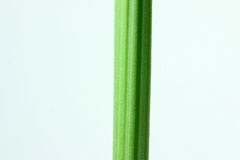Nowadays, China is the world’s biggest producer and exporter of hemp seeds and fiber, and most of pure and mixed hemp fabrics in western countries come from China. Also, China has a long history of industrial hemp cultivation, wild hemp was found in Yunnan, Tibet, Xinjiang, Shandong as well as north and northeast of China. As one of the fastest growing plants, hemp is insensitive to soil conditions, so it can be widely cultivated in most regions of China, meanwhile, hemp is most friendly to the environment, needing less fertilizer than grain, cotton as well as cash crop while using none of pesticides and biodegradable.
Hemp seed is astonishingly nutritional, because it contains high amounts of unsaturated fatty acids, mostly oleic acid (C18:1, 10%–16%), linoleic acid (C18:2, 50%–60%), alpha-linolenic acid (C18:3, 20%–25%), and gamma-linolenic acid (C18:3, 2%–5%). Linoleic acid and alpha-linolenic acid are considered essential to human health. These essential fatty acids do not serve as energy sources, but as raw materials for cell structure and as precursors for biosynthesis for many of the body’s regulatory biochemicals.
In hempseed, linoleic and alpha-linolenic occur in a ratio of about 3:1, considered optimal in healthy human adipose tissue, and apparently unique among common plant oils. Gamma-linolenic acid or GLA is another significant component of hemp oil (1%–6%, depending on cultivar), which is a widely consumed supplement known to affect vital metabolic roles in humans, ranging from control of inflammation and vascular tone to initiation of contractions during childbirth. GLA has been found to alleviate psoriasis, atopic eczema, and mastalgia, and may also benefit cardiovascular, psychiatric, and immunological disorders.


Ingredients: hemp seeds, hempseed oilProducts: nutritional supplement, protein powder, health care products
The hemp stalk presents perhaps the most usable part of the plant. Primary fibers are much longer than those of other fiber crops and are often combined with those of other plants such as bamboo, soy and silk to make durable and attractive clothes and upholstery. The interior, or bast, fibers contain almost 80% cellulose and are perfect for paper production, making building materials and creating composite materials used in auto manufacturing and even bullet-proof vests.


Ingredients: rod core powderProducts: building construction material, ultrafine powder, wood ceramics, active carbon, viscose, fiber-reinforced composite
The fiber obtained from hemp bast is ultra-strong and durable with natural color. It allows durability and eco-consciousness to combine with comfort, distinctiveness and variety in clothing. Far from the old scratchy burlap-type fabrics, hemp is now cozy and soft to wear while resisting both fire and mold, increasing air flow and lasting longer than other fabrics.


Ingredients: fibersProducts: textiles, building construction materials, insulation materials, auto/aerospace parts, medical equipment, nursing materials
The first mention of hemp root as medicine can be found in the ancient Chinese pharmacopoeia, the Shen Nung Pên-ts’ao Ching, as early as the third millennium BCE.
It is stated that the juice of the root has diuretic properties, as well as being useful in assisting the cessation of hemorrhage after childbirth.
Modern medical research suggests hemp roots’ effectiveness in reducing the symptoms of various conditions including eczema, psoriasis, fibromyalgia and arthritis.
Other than medical applications, hemp roots are also a useful source of biofuels, and novel applications and improvements have been explored in the area of skincare productions, biological disinfectant, etc.


Ingredients: rootsProducts: health care products, skincare, disinfectant, cleaning solution, etc.